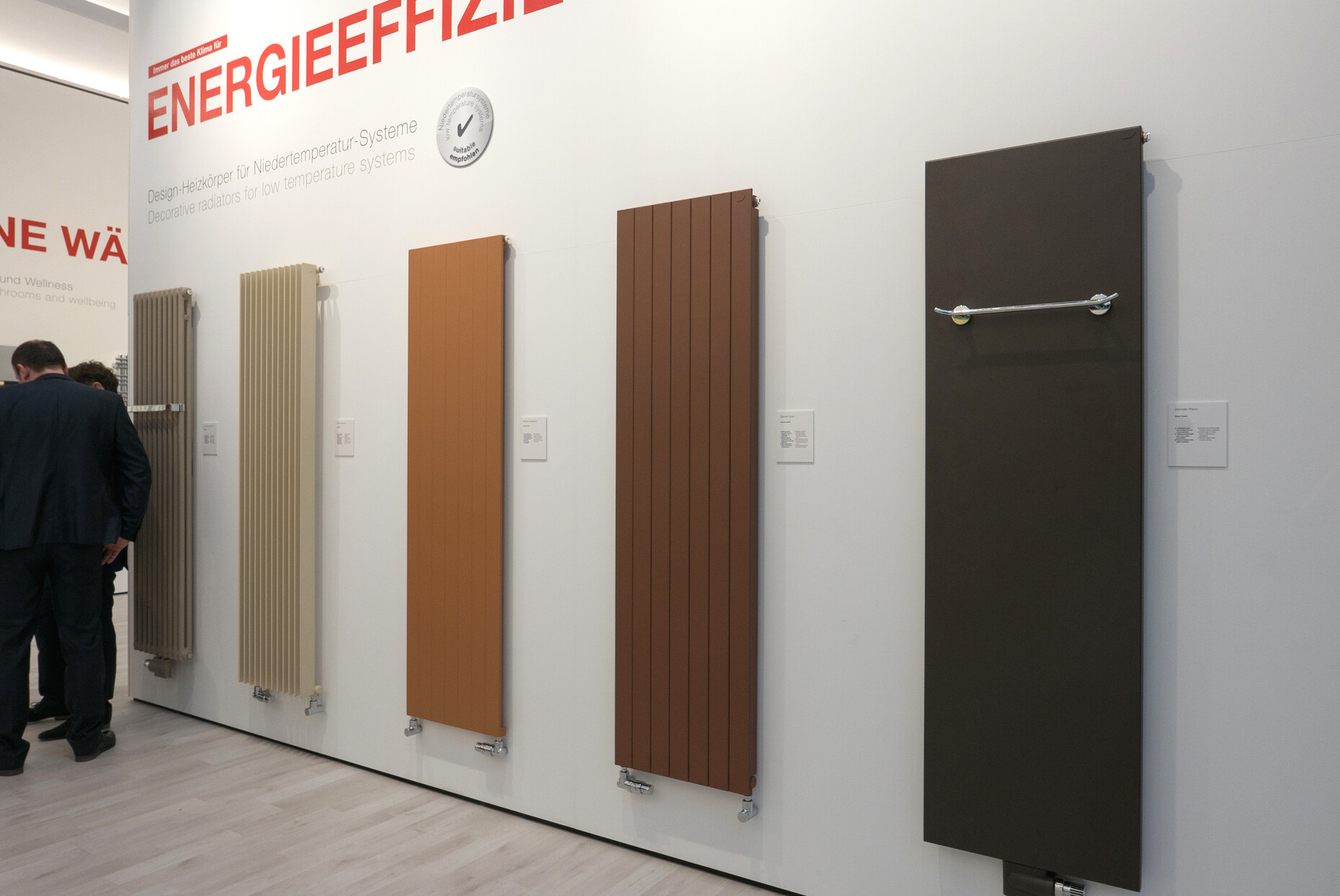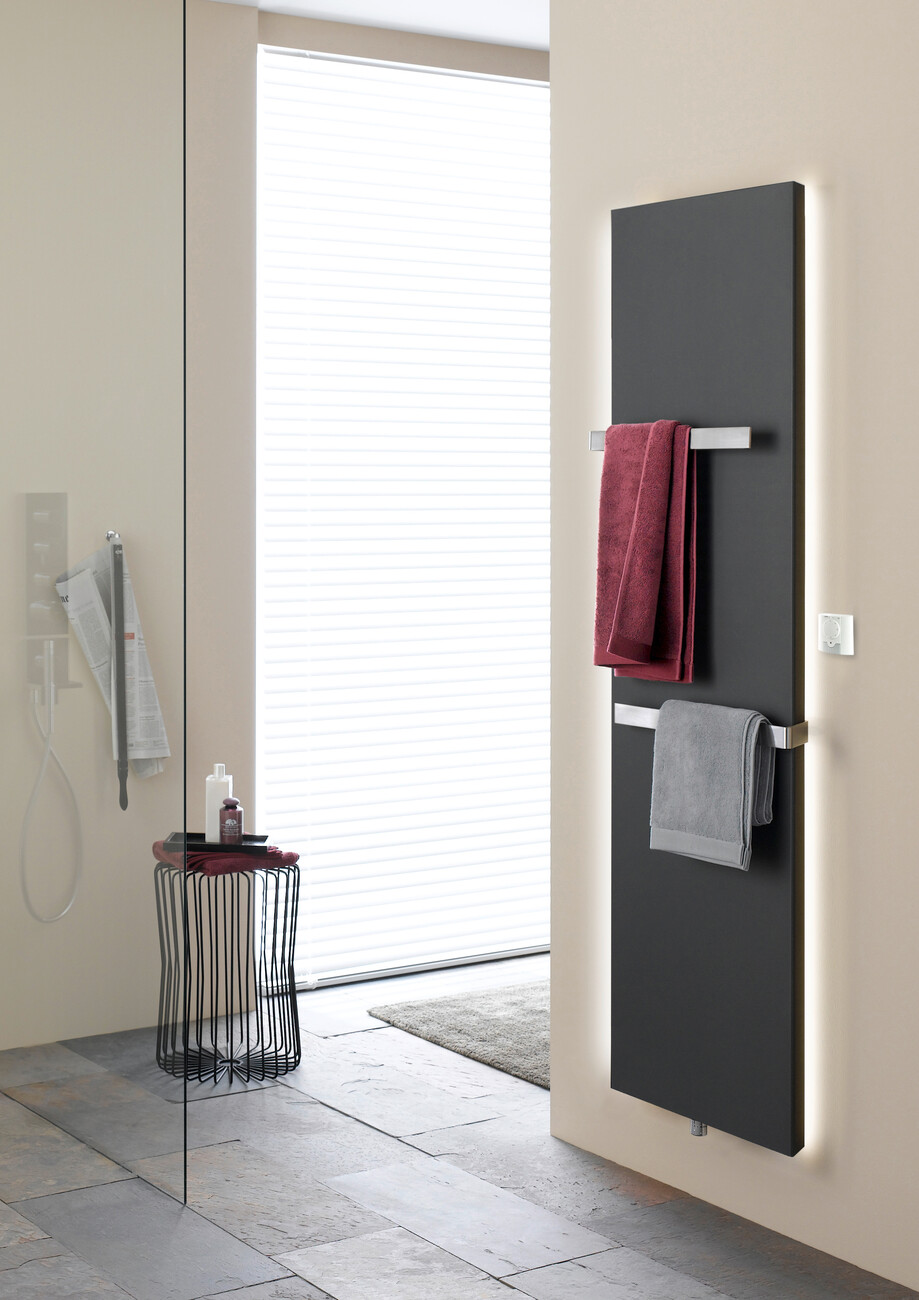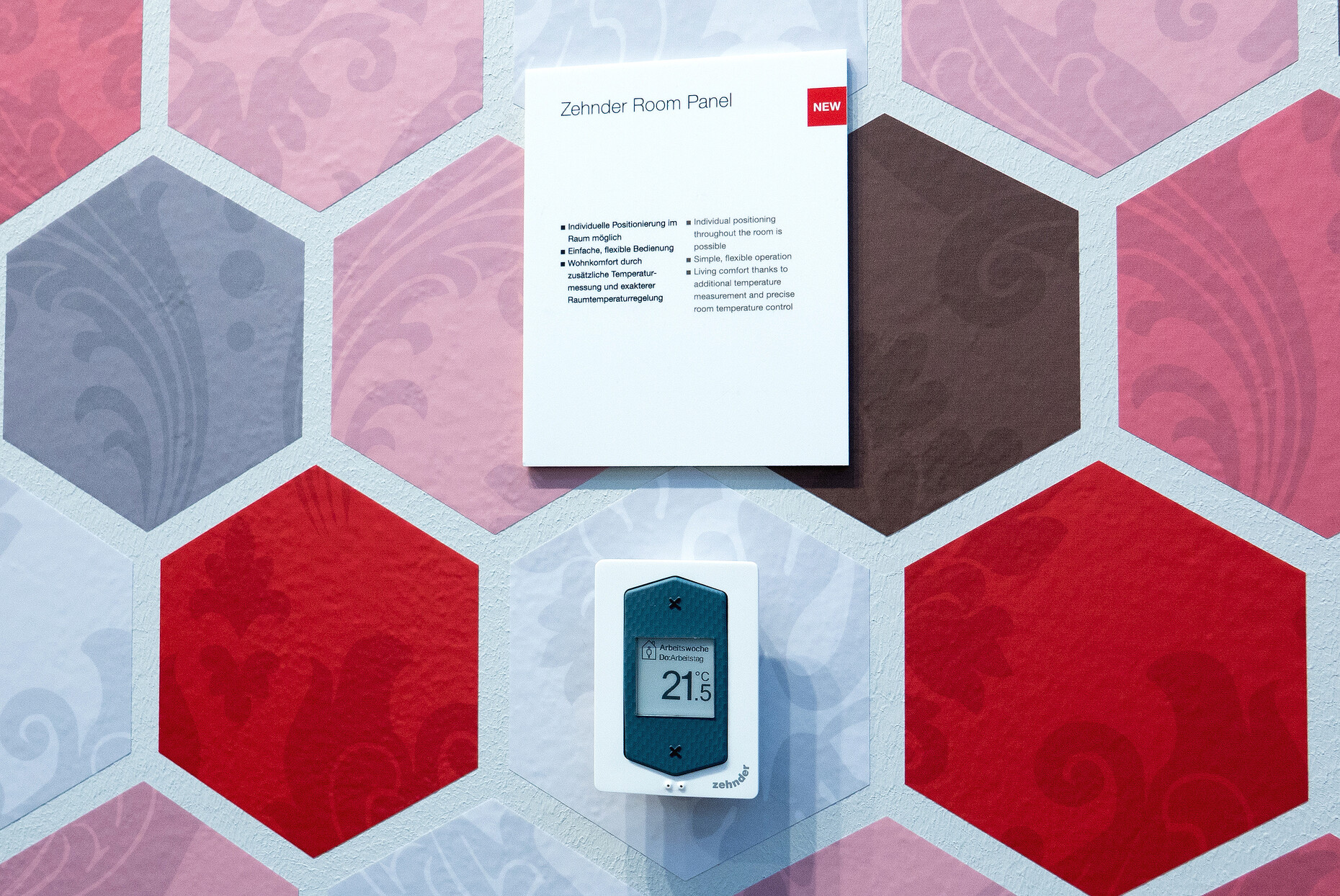Bye-bye to plain vanilla
It’s a good thing that the renowned Swiss company Zehnder has built no more motor bikes since the early 1930s. The “Zehnderli” from the early days of the company was not really technically mature. Back then, the family-owned firm decided to focus on building radiators instead. Traditionally, they are presented along with heating boilers and control technology at the ISH in Hall 8, which architect Rambald von Steinbüchel-Rheinwall designed in 1967 – it’s free of pillars and made of prefabricated concrete parts.Anyone thinking the trade fair is well attended this year should head for Hall 8, which is populated by hordes of heating technicians and you can only move forward at snail’s pace.
There, the Zehnder booth is definitely one of the best. Among other things, there are so-called design radiators on show. As soon as design is used as a prefix great caution tends to be called for. In the past, for example for late 19th and early 20th-century villas it was usually no one less than the architect who designed the radiators. Take Hermann Muthesius, from whose houses modeled after the English example you could not remove a door handle model let alone a towel rack without impairing the overall design impression. At the Bauhaus in Dessau Walter Gropius celebrated the radiator as a standard product mounted at eye level to attest to the spirit of progress. As Rem Koolhaas taught us at the Venice International Architecture Exhibition in 2014, the architecturally designed “Fundamentals” of yore have long since become components that have been perfected, are independent and are individualized in the post-industrial process that marries the trades and mass production.
Zehnder vividly woos us to replace the old and outdated. Throw out the conventional sectioned radiators and bring in the new. Thanks to improved production processes with laser welding the radiators are no longer a cratered landscape on the inside, but precision instruments for “uninterrupted operations” in apartments and bathrooms alike. To this end there are new programmable radiator thermostats with TFT displays that slightly resemble the digital price tags in supermarkets. Unlike the latter, they respond to the press of a button and replace the customary knobs. Zehnder also offers new shapes and matt surfaces and its subsidiary brand Runtal even relies on Le Corbusier’s color canon.
“Signo” is the name of a square heating module by Kermi. It can be used on its own or in combination with other squares depending on the heating you require. “Signo” is available as part of warm-water heating system or for electrical use. Heating elements are now simply becoming part of a wall or protrude from such sculpturally. Germany’s Bemm corporation, exclusive sales partner for Italy’s Irsap, offers variants of both design worlds and units that run with warm water or are electrical. Many of them were designed by Antonio Citterio. “Plawa”, destined for the bathroom, is by contrast an in-house design. The flat radiator uses hidden LEDs to light the wall behind it and warms towels, too.
A little time will pass before “Origami”, created by Alberto Meda for Tubes and first presented in 2016 in Milan, is actually on the market. A touch control element is integrated onto the upper edge of the paravent-like electric heaters. By contrast, the consoles and panels called “Rift” that Ludovica and Roberto Palomba designed for Tubes are already available. In other words, the face of heat distribution in homes is forever changing.






















